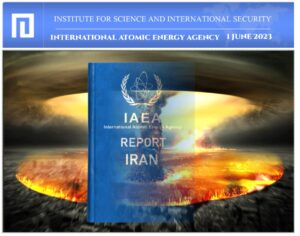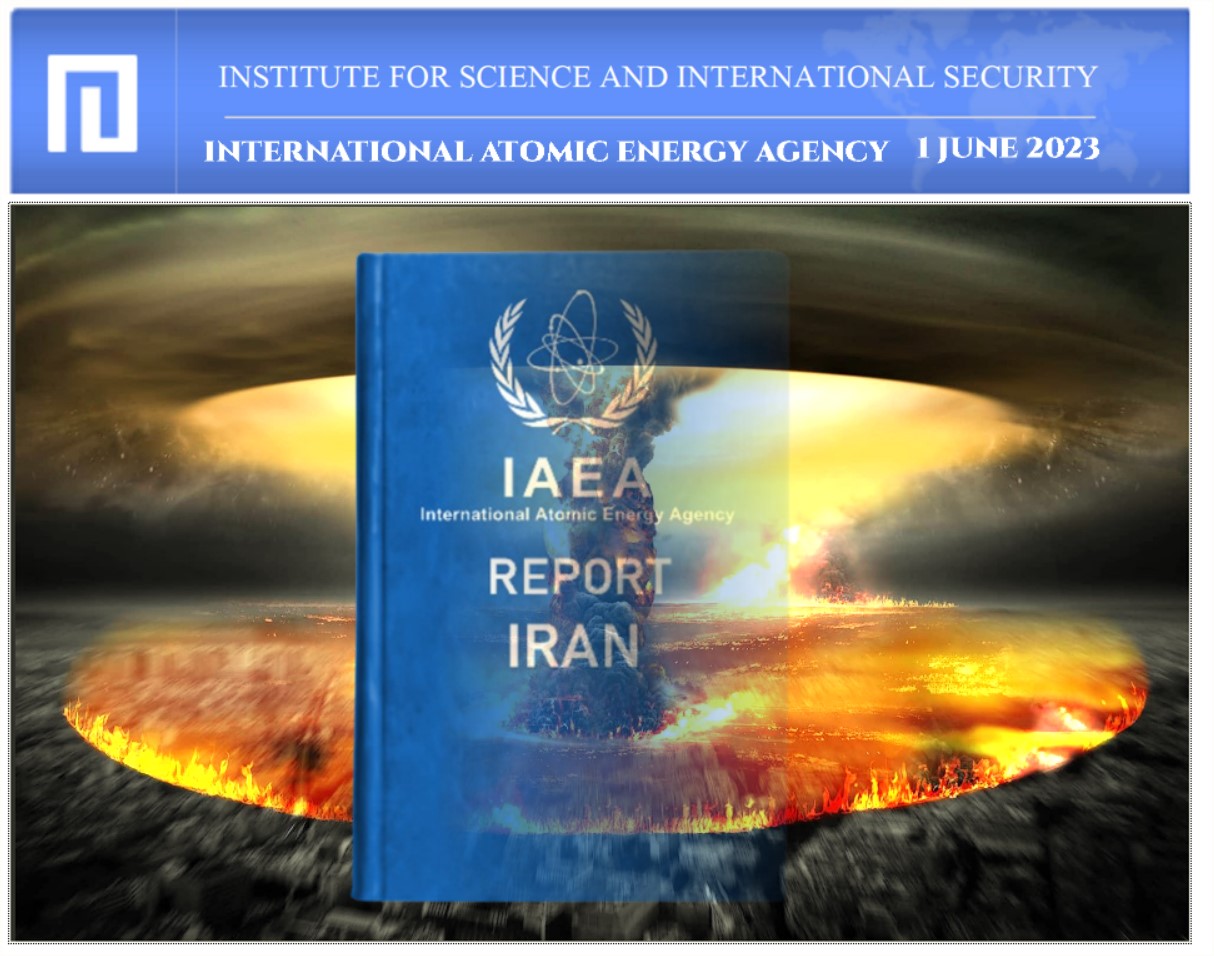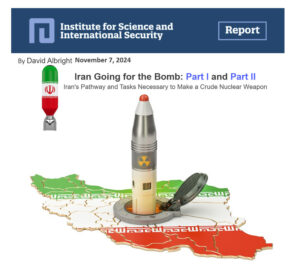
June 1, 2023 | Institute for Science and International Security
Analysis of the IAEA’s Iran NPT Safeguards Report – May 2023
David Albright & Sarah Burkhard : Institute for Science and International Security
Excerpt
The latest quarterly International Atomic Energy Agency (IAEA) safeguards report on Iran indicates limited progress on safeguards and monitoring issues, and overwhelmingly shows that Iran is unwilling to cooperate on providing full and truthful answers. On the vast majority of safeguards issues, where Iran simply cannot refute IAEA allegations, it continues to stonewall. On reestablishing monitoring, Iran is moving very slowly. Iran shows an intention to wear down the IAEA, as Iran renders any progress marginal, extremely difficult, and time consuming to achieve.
Despite the IAEA’s language in the report being difficult to understand, the IAEA has established a compelling case that Iran committed safeguards violations and has made little progress in reestablishing adequate monitoring. The Board of Governors needs to provide more support to the IAEA, condemning Iran’s lack of cooperation and providing a deadline for compliance. If it does not, Iran will succeed in maintaining secrecy over past and potentially ongoing nuclear weapons activities, weakening the IAEA in the process. Coupled with a growing uranium enrichment program and breakout capability, as well as limited IAEA monitoring, Iran could more easily — and even secretly — abandon its nonproliferation obligations and build a small nuclear weapons arsenal at a time of its choosing.
To avoid this, the IAEA should pursue additional answers on Iran’s nuclear activities and seek additional access to information, locations, and people — but on a larger scale than it has ever done before. The IAEA should release a report summarizing its understandings and findings about Iran’s past nuclear weapons program and any nuclear weapons-related materials, equipment, or activities that have continued up to today.
Background
- Iran has consistently violated its obligations under its comprehensive safeguards agreement (CSA), a key part of the Nuclear Non-Proliferation Treaty (NPT), under which it must cooperate with the IAEA and fully account for nuclear material and past and present nuclear activities. The IAEA refers to this process as a country providing both a correct and complete nuclear declaration.
- For more than four years, the IAEA has been investigating the presence of man-made uranium particles at three Iranian sites. Earlier, it sought information about nuclear material and activities at a fourth site. In March 2022, the IAEA found Iran in breach of its safeguards obligations for failing to declare its use of nuclear material at the fourth site, a former Amad Plan site called Lavisan-Shian.
- The sites are related to Iran’s past work on nuclear weapons under the Amad Plan, Iran’s crash nuclear weapons program dating to the early 2000s, but concern its NPT compliance today, including the whereabouts of nuclear material and equipment and the nature of activities at the sites, as well as whether Iran continues nuclear weapons-related activities.
- The IAEA concluded in September 2022 it is “not in a position to provide assurance that Iran’s nuclear program is exclusively peaceful.” This means the IAEA cannot verify Iran’s compliance with its CSA and the NPT and is implying Iran is violating both agreements.
- A November 2022 IAEA Board of Governors resolution spelled out four steps Iran must take in order to clarify the outstanding safeguards issues. These include providing technically credible explanations for the presence of uranium at the three sites, informing the IAEA on the current location(s) of the nuclear material and/or contaminated equipment, providing all the information the IAEA needs, and providing access to locations and materials as needed.
- A new safeguards issue arose, when, in January 2023, Iran made an undeclared change in the operation of two advanced centrifuge cascades at the Fordow Fuel Enrichment Plant (FFEP), followed by the IAEA’s detection of near 84 percent highly enriched uranium (HEU) particles at the cascades, which Iran had declared were enriching only up to 60 percent HEU. Iran’s explanation was that unintended fluctuations occurred. At a press conference, Director General Rafael Grossi stated that his inspectors would be able to find out whether the high enrichment level was a “one time shot, a one-time occurrence, or a more dedicated effort.”
- Following high-level meetings between the IAEA and Iran, the two released a joint statement in March 2023 in which Iran pledged to take steps to cooperate with the IAEA, expedite a resolution over the outstanding safeguards issues, and allow the IAEA to implement appropriate verification and monitoring activities.
- This analysis summarizes and assesses information since the IAEA’s last NPT safeguards report on Iran — the latest report issued on May 31, 2023. It also provides extensive background information on the former Iranian nuclear weapons sites under IAEA investigation, in addition to IAEA findings.
Andrea Stricker is deputy director of the Foundation for Defense of Democracies’ (FDD) Nonproliferation and Biodefense Program and an FDD research fellow. Follow her on Twitter @StrickerNonpro. FDD is a nonpartisan research institute focusing on national security and foreign policy.


